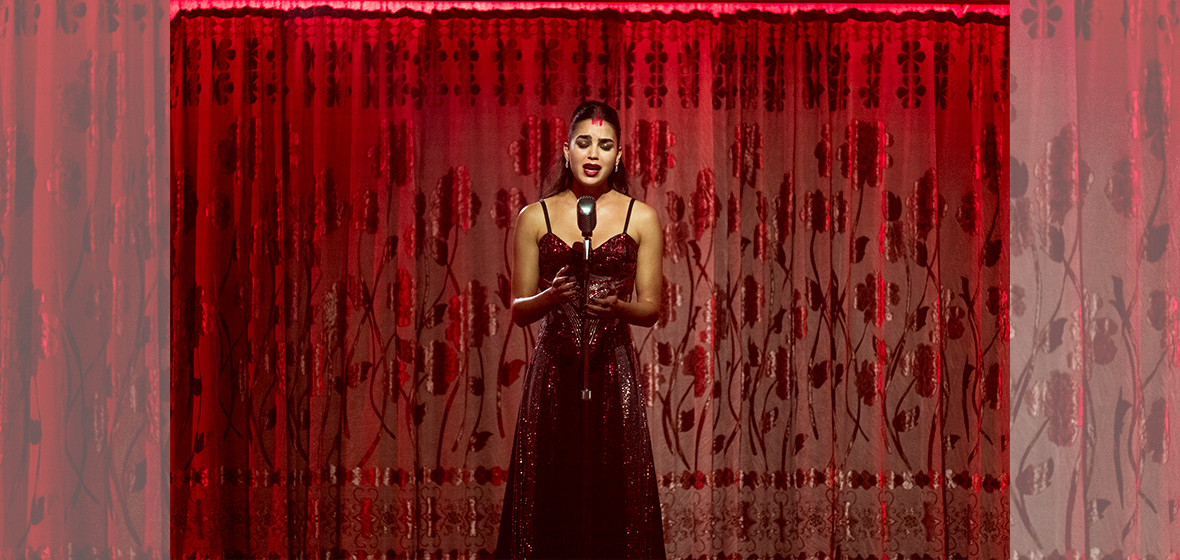Benjamin Millepied’s Carmen is the kind of film an experienced filmmaker could never make. I say this as a compliment, and as an film buff who yearns for the medium to explore new avenues outside of the constraints of academic formality.
Millepied did not go to film school and does not have decades of experience behind the cameras. He has worked all his life as a dancer, formerly of the New York City Ballet, now head of L.A. Dance Project, and is mainly known to film buffs as the choreographer of the dance scenes in Darren Aronofsky’s Black Swan.
Carmen is his feature debut, more an artistic statement than a commercial urge. He goes about it with the same ingenuity of a young go-getter grabbing the camera for the first time. What he brings to the table is what he knows about movement – dance and movement – and everything else is a patchwork quilt of visual influences. He talked to his cinematographer, pointed at the scenes, and said, “On that one, I want David Lynch; that one, I want Wim Wenders; over there, wants Frank Perry, and maybe sprinkle some Almodovar whenever you can”.
The story is loosely based on Bizet’s Carmen, set between Mexico and Southern California. Carmen (Melissa Barrera) has to run away from home after her mother (Marina Tamayo) is murdered by the cartel. While crossing the border, her convoy is stopped by a group of right-wing vigilantes after illegal immigrants, which is where she meets Aidan (Paul Mescal), a young lost soul from a small border town. On the run from authorities, Aidan and Carmen find refuge in her aunt Masilda’s (Rossy de Palma) bar.
That is the skeleton of the plot, but Millepied and his three writers spare us the big dramatic set pieces to give us the intimate, quiet moments in between. It is a daring choice, but it works at evoking a mood rather than spelling out the character’s feelings for the audience. Gen-Zs would say, “It’s a vibe”, and they are correct. An audience that lets itself be lulled by Carmen’s visual experience and beautiful dance scenes gets more enjoyment than one expecting a traditional narrative film.
It makes sense that the film is such an international melting pot. Millepied is French, Mescal is Irish, Barrera is Mexican and de Palma is Spanish. Jörg Widmer, the cinematographer, is German. The source material is a French opera set in Seville, here set in the U.S. but shot in Maroubra and Broken Hill. This cacophony of experiences and visions seeps through the reel, and while it can make an unbalanced experience – sometimes it feels like one of the actors or even Millepied, is making a different film – it often adds new emotional layers.
Say, for example, de Palma, Almodovar’s muse (everyone should go and watch Kika today), who enters the film with a tremendous dance sequence that only a non-professional dancer could pull off, adding the energy the story needed to complement the severe and dramatic flair. The scene where she overtly sexualises Mescal is such a tremendous Almodovorian moment that it warmed my heart.
It is good to see Barrera and Mescal in a film like this before both blow up in the Hollywood scene. Mescal, particularly with the airs of a young Burt Lancaster, proves his work in Aftersun was not an accident. We will miss him when he gets churned into the Marvel machine.
That said, Carmen is not a film I could recommend to everyone. It is a uniquely striking experience but lacks balance and depth. It is gorgeous to look at, but demands the audience to meet it where it stands. That makes it compelling, but I can see how others would not do it.
If anything, it is unique and does its best to push the medium’s limits. The dances are gorgeous, and nothing about it is mundane. Better to have one Carmen a year than twenty generic award-bait dramas.
Carmen deserves to be celebrated.
Verdict: 4 out of 5
For fans of dancing, modern or classic. Opera lovers beware, all songs are original – there is no “love is a rebellious bird” – but if you approach it with an open mind, it has a world to offer.




